Below is guide on community bushfire safety and preparedness! In today's world, where unforeseen events like bushfire emergencies can occur at any moment, it's crucial for communities to come together and prioritise safety measures.
This web page aims to provide an overview of the importance of community bushfire safety and preparedness, along with practical steps individuals and communities can take to enhance their resilience.
Our Volunteer Bushfire Brigade Community Safety Coordinators
The City of Albany’s Emergency Services Team with the support of the City’s Volunteer Bushfire Brigades have dedicated time and resources delivering bushfire community engagement activities across the city.
In 2023, in a first for the state, the City embedded Brigade Community Safety Coordinators (CSC) into the southwest sector Brigades to assist educate and empower their communities.
The Community Safety Coordinator plays a critical role in creating a safer and more resilient community within their brigade area and the wider City of Albany. By fostering communication, collaboration, and preparedness, the CSC help engage and educate the community of bushfire risks and contribute to the overall well-being and safety of the city and its residents.
What can the Community Safety Coordinator’s do for me?
The Community Safety Coordinators (CSC) are fundamental in promotion of the below key factors:
- Community Empowerment: Encourages resident involvement in fire safety.
- Public Safety: Informs and educates the community on fire risks and response.
- Building Partnerships: Collaborates with local groups for effective community engagement.
- Resource Efficiency: Improve fire prevention and preparedness through coordination.
- Public Image and Trust: Enhances city's image with proactive safety measures.
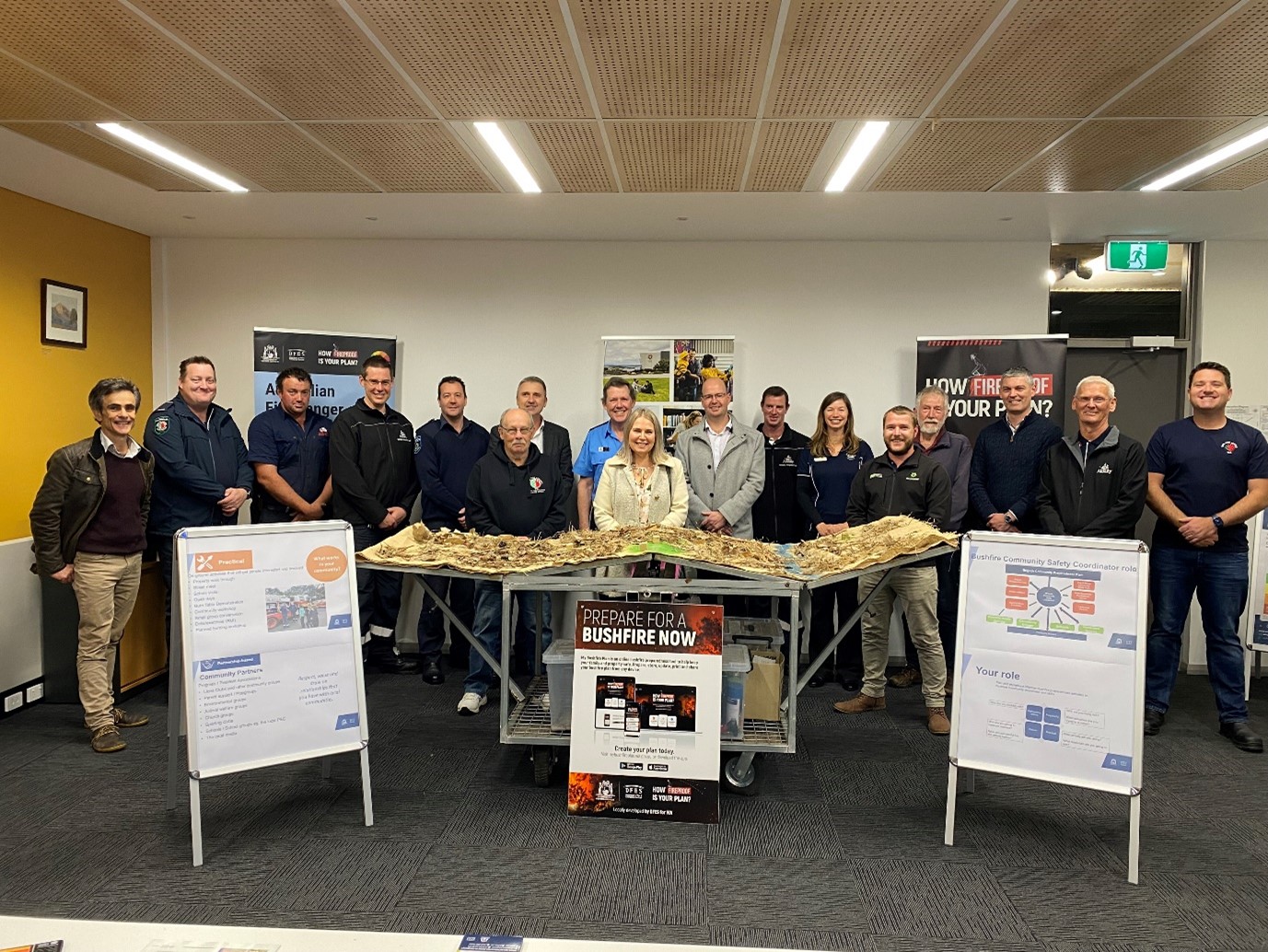
If you are interested in being a Community Safety Coordinators (BCSC), contact your local Brigade.
Bushfire Safety Workshops and Events
Educating the community about safety practices and preparedness measures is vital for fostering a culture of resilience. Workshops and training sessions can empower individuals to take proactive steps to protect themselves their families and their neighbours, fostering a sense of unity.
Active involvement from community members is fundamental to the success of bushfire safety and preparedness initiatives. We encourage our community to participate in local bushfire preparedness drills, workshops and by joining local ‘Community Safety & Preparedness’ WhatsApp groups, to strengthen community bonds and enhance resilience.
Our Workshops and Events
Our workshops and events are designed to be flexible and meet a vast range of community needs specific to your geographical location, for the purpose of protecting life, assets, fostering resilience, influencing community collaboration and promoting peace of mind.
Workshops and Events delivered within our community include:
Bushfire Safety & Preparedness Workshop
Build support networks and increase community knowledge about bushfires, covering; geographical location risks; planning for you, your family, your pets and your property; brigade response; and empowering community. An effective workshop, anywhere within your community, market stalls, information days with your neighbours and/or community.

Burn SMART Workshop
How to manage fuel loads to help protect your property from bushfire and a hazard reduction burn demonstration. An effective workshop, at your property with your neighbours and/or community.
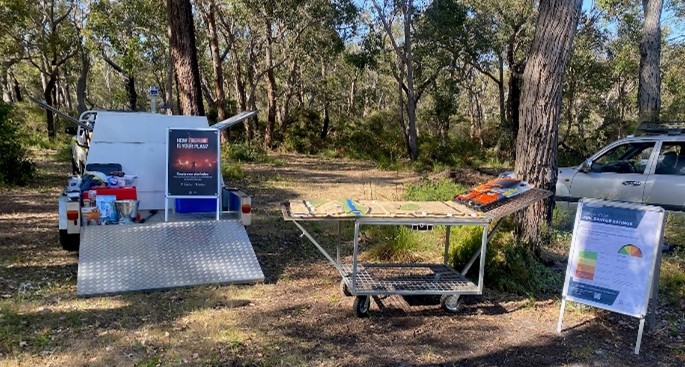
Property Walk Around Workshop
Understand your risks and become aware of your environment, the role of fire, suggestions on how to better prepare your house and property. An effective workshop, at your property with your neighbours and/or community.
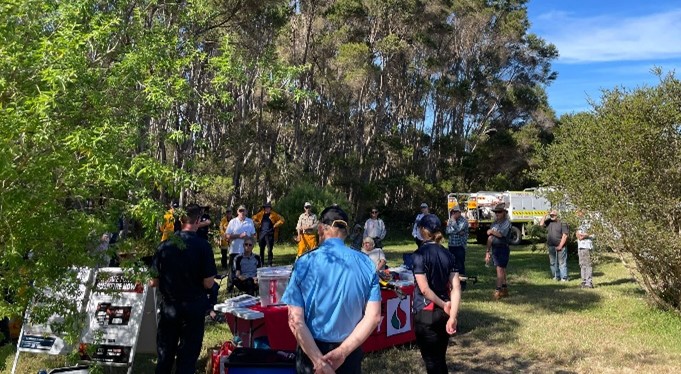
City of Albany Community Workshop
Business’s and residents within the FRS / Category 2 Boundary can engage the City Emergency Services team to deliver tailored workshops or events on Bushfire Preparedness. An effective workshop or event for community groups, market stalls, schools and/or business.

Other
Contact the City or Brigade Representative to assist you plan, prepare or answer questions.

Community Bushfire WhatsApp group
Each Brigade has a Community WhatsApp group for the purpose of keeping residents up to date with information specific to their brigade boundary area. Sharing communications such as; bushfire alert information specific to your area and notification of upcoming community preparedness workshops and events.

Want to Host a Workshop or Event?
Should you be interested in hosting a workshop or event you can contact your local Bushfire Brigade Community Safety Coordinator listed below:
Bushfire Plan, Prepare, Act
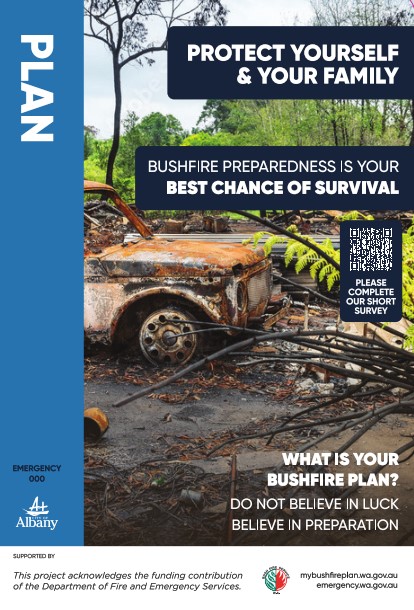
What's Your Bushfire Plan?
Bushfires can affect you whether living in bushfire prone or residential areas.
A bushfire plan helps identify potential threats and vulnerabilities, building proactive planning and preparation to mitigate risks and ensure the safety of oneself, loved ones, and property.
A bushfire plan is not just a document; it's a lifeline during times of crisis.
Here's why having a bushfire plan is important:
-
-
-
-
-
-
- Protection of Lives
- Preservation of Property
- Early Action Saves Time
- Peace of mind
- Adaptation to changing conditions.
What’s Your Bushfire Plan?
The Department of Fire and Emergency Services (DFES) provide an easy, online, step by step, Bushfire Plan tool, for further information and to create your Bushfire Plan click HERE

Bushfire Preparedness
Bushfire preparedness is essential for individuals and communities. Adequate preparation can help minimize the risk of property damage, injuries, and loss of life during a bushfire.
Community safety and preparedness are not just buzzwords; they are essential pillars of resilient societies. By prioritising proactive measures, fostering collaboration, and empowering individuals, communities can effectively mitigate risks and enhance their capacity to withstand and recover from emergencies. Together, let's build safer, more prepared communities where everyone can thrive.
Here's a brief overview of what to consider when preparing your family, home, and property.
My Bushfire Plan
Having a bushfire plan is paramount for individuals and communities, serving as a critical blueprint for safety and preparedness. A Bushfire Plan outlines precise steps to follow in the event of a bushfire, including evacuation routes, communication protocols, and measures to protect life and property. A well designed Bushfire Plan will minimise risk, facilitate swift action, and safeguarding both individuals and their surroundings against the destructive impact of Bushfires.
- Make sure you and your family have developed a comprehensive family emergency plan that outlines what to do in the case of a bushfire.
- Ensure all family members understand the plan and know how to execute it.
- Ref to Bushfire Planning for further information.
Emergency Evacuation Kit
An emergency evacuation kit is a fundamental component of disaster preparedness, offering peace of mind and essential resources during times of crisis, to sustain individuals and families during evacuation scenarios. Below are some things your could consider:
- Prepare an emergency kit containing essential items such as; important documents, water, battery powered radio, chargers etc
- Ensure you have a list of important valuables you need to pack to reduce the stress as a bushfire approaches i.e. jewellery, medications, phones, wallet etc
- Keep the kit in an easily accessible location
Prepare your Property
Preparing your property for bushfires is critical for reducing the risk of damage and protecting your home and belongings. By implementing proactive measures, such as creating defensible spaces, clearing vegetation, and fortifying your home's defenses, you can significantly increase its resilience to fire. The below points explore some essential steps homeowners can take to safeguard their properties and mitigate the impact of bushfires.
- Create a defensible space around your home by clearing vegetation and debris.
- Regularly maintain your property by keep fuel loads low and ensure you meet the Fire Management Notice during the fire season.
- Ensure access to water sources such as hoses, sprinkler systems and/or firefighting equipment.
- Ensure you have adequate space and have cleared obstructions to allow for a fire truck to safely enter and escape your property.
- Back-up power measures in place
Community Engagement
Community engagement plays a pivotal role in bushfire preparedness, fostering a collective effort to enhance resilience and mitigate the effects of Bushfires. By actively involving residents, local authorities, and organisations, communities can coordinate resources, share knowledge, and implement effective strategies to prepare for, respond to, and recover from bushfire emergencies. Below are some key considerations to consider:
- Engage with your community to create a network of support and assistance during bushfire emergencies.
- Participate in community fire exercises and workshops (especially if you are live in a high bushfire prone area.
Insurance
Having the right insurance cover is crucial, especially in high-risk areas. While we are not providing professional advice, here are some steps to asses your insurance needs:
- Evaluate your assets; what is the value of your property, belongings, assets you want to insure.
- Determine Adequate Insurance Amount; The right insurance amount depends on factors like property value, replacement costs and risk exposure.
- Understand the Policy Types; different policies cover different risks e.g. home and contents insurance, landlord insurance etc.
- Review Policy Limits; check if your policy limits are sufficient to cover potential loss. Some policy’s only cover fire, not damage from smoke, heat, scorching, melting etc.
- Consider special Risks; If you live in a bushfire-prone area, ensure your policy covers fire related damage.
- Document Valuables; Taking photos of valuables and keeping evaluation certificates can help during claims.
- Fire Management Notice and Insurance Payouts; Compliance with Fire Management Notices is essential. Non-compliance could impact insurance payouts.
- Seek Professional Advice; consult with an insurance professional.
It is important to contact your insurer before attempting or authorising any building work or repairs and if you remove anything to reduce safety hazards, make sure you take photos and keep samples of materials to show an assessor.
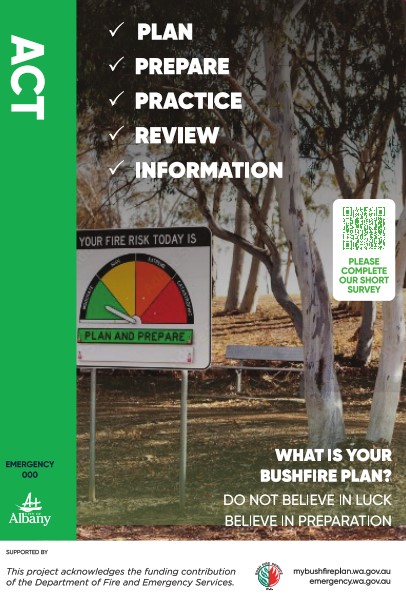
Act
When a bushfire approaches, it's crucial to act swiftly and decisively to ensure your safety and the safety of others.
It's essential to prioritize your safety and take proactive measures to protect yourself and your loved ones during a bushfire emergency.
By following the below steps and remaining vigilant, you can increase your chances of safely evacuating when a bushfire approaches.
Below is some key information to assist you ACT when a fire is approaching.
Keep Informed
- Stay informed about bushfire risks, emergency updates, alerts and evacuation orders through appropriate media sources:
Activate Your Bushfire Plan
- Implement your family's bushfire plan, which should outline evacuation routes, emergency contacts, and essential items to take with you.
- Stay calm and alert and keep an eye out for changes in fire behaviour.
- Secure your home, closing all windows, doors, turn off gas and power sources, place towels or wet blankets at the base of doors and windows.
- Stick to your plan (where practical).
- Use designated evacuation routs provided by local authorities and avoid shortcuts or unfamiliar roads.
Leave Early
- If you're in an area at risk of bushfires and you receive an evacuation order, leave early to avoid being trapped by fire, smoke, or blocked roads.
- Don't delay evacuation. Delaying can significantly increase the risk to you and emergency responders.
If Caught in the Path of a Bushfire
- Remain calm and focused.
- Keep an eye out for changes in fire behaviour.
- Wear Protective clothing that is made of 100% cotton and enclosed boots.
- Call emergency services ‘000’ and provide your location and situation.
- If caught while driving, find a cleared area away from trees, bushes and tall grass, stay inside the vehicle until the fire has passed, with doors and windows closed, cover yourself with a wool or %100 cotton blanket.
- Cover your mouth and nose with damp cloth if you do not have a mask to filter out smoke and ash.
- Stay low to the ground where the air is cooler and less smoky.
- Shelter in a room furthest away from the fire and identify 2 escape routes.
- Where possible, do not leave your place of shelter until after the fire has passed.